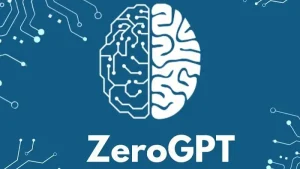5G and Its Impact on Mobile Gaming

5G offers higher download speeds, which mean that gamers playing online can avoid being throtled by bandwidth issues, while edge computing is inherently closer to users, meaning that more processing-intensive applications can be served from the edge, if needed, improving performance, and reducing battery drain on the user’s phone.
These changes could radically alter mobile gameplay, which would be especially important to eSports reflex-response games where a few milliseconds can multiply the difference between winning and losing. Here’s how.
Ultra-Low Latency
But by allowing high-speed downloads and faster uploads, gaming on mobile phones will be greatly improved. It isn’t just the speed – it is that the lag, the time it takes to transmit a command through latency, can be game-changing depending on what you’re doing. In 5G, latency can be as low as a millisecond, so your distance on-screen can move with a fraction of a millimetre accuracy when you move. Your aim is even more precise when you shoot and your punches will find even less resistance when you fight.
Much of that speed and dependability comes from a combination of new technologies, ways of getting the signal out and making the connection: 5G utilises millimetre wave (mmWave) bands that transmit at higher frequencies than television and radio bands, as well as new bands that have less ‘traffic’ (ie, carry less interference) that works well with applications such as gaming that require ultra-low latency.
Multi-access edge computing is another important enabler of 5G’s low latency: it works by moving processing near to where users are, so that data can be processed faster. Multi-access edge computing also helps increase the amount of bandwidth that can be allocated to gaming traffic – an important resource for games developers, who must all too often balance demanding performance needs against the fact that game data now has to pass through the more restricted bandwidth offered by today’s mobile networks.
Faster Data Transfer
As games are large in file sizes and tend to be updated often, good data transfer speeds of 5G help gamers a lot, particularly with huge downloads and frequent lag in the actual game.
5G technology likewise improves the immersiveness and experiential quality of ‘real and live’ immersion in gaming activities, empowering players to communicate directly with other players in real-time – an ability that enhances the sociality of gamers by bridging individuals through gaming symbiosis.
5G networks can be used to support new technologies, such as VR/AR/MR/XR, which produce a higher fidelity gaming experience but can use special (expensive hardware). In general, VR/AR/MR/XR experiences are not available to consumers; this will change as 5G is more available; providing its subscribers with this type of experiences more widely; this would promote expansion of existing gamer industries, since it should increase both subscription levels as well as get people to ‘try’ different games.
High-Definition Video Streaming
An excellent connection is needed when it comes to streaming video, and with its high data rates, as well as its negligible packet loss and jitter, 5G is also ideal for mobile gamers, who up until now could enjoy only clear and stable gameplays if they were connected to a larger network that could afford to invest in extensive and more cost-effective infrastructure.
5G’s ultralow latency also offers split-second response times in multiplayer games where reaction times of just a few hundred miliseconds often decide between victory and defeat, such as first-person-shooters and the Battle Royale genre where every millisecond matters!
Enabled by 5G’s super-fast, low-latency connectivity, this new capability allows for mobile gaming experiences that are highly immersive and can bring players in touch with the virtual realm in a manner that feels indistinguishable from real-world activities – all while enabling them to be aware of and react to the physical reality that surrounds them. (Future students, for example, could experience an immersive ‘virtual field trip’ to Machu Picchu through VR, or use AR to experiment with the physical properties of complex materials in a virtual environment.)
Enhanced Interactivity
The proposed data rates for 5G are around 10 gigabits per second (gigabit=one thousand million bits transferred per second), with data rates allowing five to six times more data traffic than the preceding generation, supporting transformative concepts such as self-driving cars, 4K/8K television service, AR/VR apps and IoT devices to work at scale without relying on fibre.
Mobile gamers expect the ultra-low latency, ensuring that in a split moment they can make a crucial decision which will either make or break their eSports or real-time multiplayer gaming experience. On a mobile gaming perspective the meaning of ultra-low latency is ensuring a responsive behaviour when fully immersed in eSports gaming. The experience has to be so immersive that any instruction given by the gamer has to get an instant response from the gaming – you give the command and immediate response is expected (ultra-low latency). You pick up your weapon and immediately shoot them in the head, making you a winner and the gaming experience one of ultimate pleasure.
In addition, 5G provides a foretaste of a future for online gaming by removing constraints on who can access popular games and by bypassing the need for expensive console hardware and lengthy mandatory game downloads. By collaborating with the mobile company Verizon and the GPUs of the Qualcomm processor, the gaming hardware Razer is developing will have a built-in cloud gaming feature that will power console-quality gaming from your smartphone. This offers the potential of gaming as telecharged service, especially when travelling or out and about, battle-duelling with friends!







